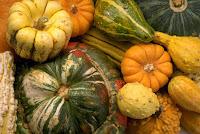- Stormwater runoff: Rainwater running off impervious surfaces or water saturated landscapes, carrying with it sediments and pollution into stormdrains or nearby water.
- Point source pollution: Water pollution discharged from easily identified sources such as discharges from factories or sewage treatment plants.
- Nonpoint source (NPS) pollution: NPS pollution is not easily pinpointed to a single source. Pollutants from our activities such as; gasoline and oil leaks, pesticides and fertilizer accumulate on the land. Then rainfall or excess irrigation carries these sediments and dissolved chemicals to waterways in stormwater runoff or by leaching or percolating through the soil.
You would think that with water resources so limited everyone would want to protect it. Three-quarters of the Earth’s surface is covered in water, 97% of that is salt water, 2% is tied up in polar ice caps. Therefore we have 1% of the Earth’s water available for our use and it is imperative to protect it, and prevent it from becoming contaminated with stormwater runoff.
Since the formation of the Environmental Protection Agency (EPA) and the passage of the Clean Water Act and subsequent amendments most of the point sources of pollution have been regulated or eliminated. Huge gains have been made in restoring water quality here in Tampa Bay and the rest of the United States. However, NPS pollution is not as easily regulated and maintained.
There are things we can and should do to eliminate as much of the nonpoint source pollution as possible. Some of them would take separate articles to write about such as watering efficiently, fertilizing appropriately, mulching, and managing yard pests responsibly. Reducing stormwater runoff is another method to eliminate some of the NPS pollution. One way of slowing runoff is directing downspouts onto pervious surfaces (mulched plant beds or lawns) so that water slowly seeps into the ground. Another method of reducing runoff is, where possible, use pervious surfaces for walkways and driveways. Pervious materials include; mulch, stepping stones, pavers, gravel, porous concrete and brick. These materials allow water to seep into the ground thereby filtering out pollutants. Also learn about and use rain harvesting techniques to eliminate some of the runoff. Not only do rain barrels reduce runoff they are an additional source of landscape irrigation water especially for hand watering. We offer rain barrel workshops here at the extension office. To find out the class schedule go to our website: http://www.pinellascountyextension.org/ and click on calendar in the title bar.
Following are a few more tips from “Stormwater Systems in Your Neighborhood” from Southwest Florida Water Management District:
- Never dump oils and other chemicals from your home directly into stormwater drains,which are direct conduits to your stormwater pond or natural waterway. Contact your local government’s waste management department for a list of disposal facilities.
- Keep vehicles tuned up and in good operating condition. Check for drips and repair leaks immediately to keep nuisance oils off pavement.
- Buy low- or no-phosphate cleaners and detergents. Phosphates act as a fertilizer and
increase algae and aquatic weeds in stormwater ponds. When these plants die, they rob the water of oxygen and fish may die. - Wash your vehicles, bicycles and home equipment on the lawn, where soapy water can’t quickly run toward the nearest storm drain, picking up other pollutants as it goes.Wash your car with nontoxic, low-phosphate soap and use water sparingly.
- Sweep walks and driveways instead of hosing them down.
- Clean up pet wastes from which nutrients and bacteria can enter the stormwater drains and contaminate the water system. To download the entire document go to: http://www.swfwmd.state.fl.us/publications/type/all.
In Florida much of our drinking water comes from ground water supplies, which often lies near the surface. Excess stormwater runoff could infiltrate our groundwater. It is crucial that we do our part to reduce runoff when possible. The following EPA website has many more in depth articles on what we can do to help: http://www.epa.gov/owow/nps/. Another source of information is the Department of Environmental Protection (DEP) at the following website: http://www.dep.state.fl.us/water/nonpoint/index.htm.






